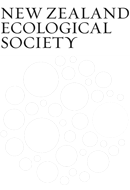- Department of Wildlife Ecology & Conservation, IFAS, University of Florida, PO Box 110430, Gainesville, FL 32611-0430, U.S.A.
- Manaaki Whenua Landcare Research, P.O. Box 69040, Lincoln 7640, New Zealand
In an area targeted for predator control, untrapped land can act as a source of new predator recruits into the trapped area, reducing biodiversity outcomes. We investigated how increasing the size of untrapped land could drive up costs and also compromise the ability to control predators. Using an individual-based simulation model, we explored how increasing the size of untrapped land impacted rat, possum, and stoat densities and how monetary costs rise because of the need for extra trapping effort near the perimeter of the untrapped property. This was done for low, medium, and high carrying-capacity habitats, such as drylands, beech, and podocarp forests, respectively. Sizes of overall areas in the simulation were 576 ha (rats), 2304 ha (possums), and 32 400 ha (stoats). Using a 5% tracking/trapping rate as a density impact threshold at which we considered biodiversity outcomes would be significantly affected, we calculated the corresponding densities as 20 rats km−2, 13 possums km−2 and 0.4 stoats km−2, respectively. For medium carrying-capacity landscapes, threshold densities over the full extent (trapped and untrapped areas) were exceeded when the untrapped area was 36.9 ha for rats, 72.6 ha for possums, and 459 ha for stoats. The trapping costs at the density impact threshold were about 4–5% higher than at the baseline if all property owners participated. For low carrying-capacity landscapes, biodiversity thresholds were typically not exceeded even at the largest untrapped area modelled. For high carrying-capacity landscapes, modelling results indicated that untrapped areas had to be smaller to meet thresholds. Conservation organisations can use the results to evaluate whether and how to implement trapping programs in areas where there is not 100% cooperation among landowners.
